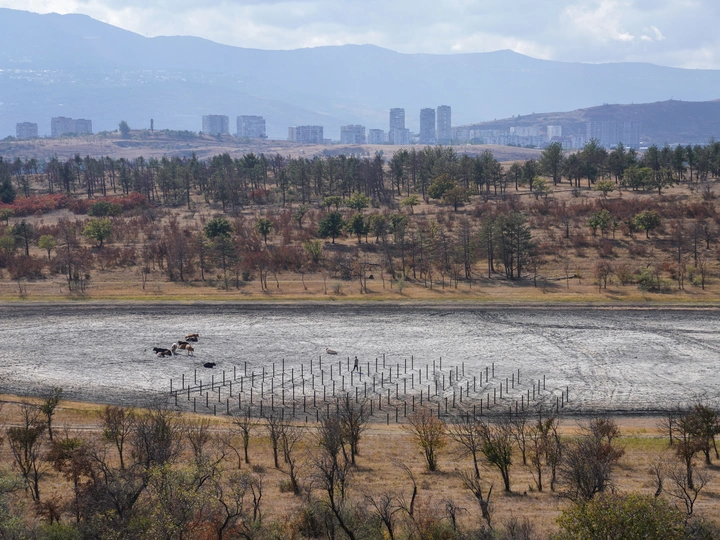Threshold Landscape

Salome Katamadze
NOIA practice is an Architecture and Landscape office involved in different creative fields, based in Prato, Italy and Tbilisi, Georgia. The practice was founded by Salome Katamadze and Duccio Fantoni in 2020.
Salome Katamadze (born in Tbilisi in 1994) graduates from the University of Ferrara, with the MA thesis in Landscape Architecture Studio. In 2021, she wins a fellowship at Fondazione Benetton, where developes transdisciplinary research "Threshold Landscapes. New cartography for the places in transition". Currently she is a PhD candidate at DAStU of Politecnico di Milano with the research about border landscapes and their transformations in the zones of conflict.
Duccio Fantoni (born in Prato in 1994), studies at Waseda University Art and Architecture School in Tokyo and graduates from the University of Ferrara, with the MA thesis in Architecture Design Studio. In 2019 he becomes a certified Architect and joins National Architecture Order in Prato. Currently he is a PhD candidate at DAStU of Politecnico di Milano with the research about the urban tissue of Tbilisi and explores the role of the Tbilisian courtyards, so-called Italian Gardens, in the definition of the specific urban identity during the transformations of the city.
From the very beginning of the studio, the professional practice has been inseparable from the intense research activity that intertwines Architecture and Landscape. They have been visiting lecturer at TAW 2020, ATINER 2021, GU of Tbilisi, Architectural Foundation of Bergamo 2022 and invited critics at VA[A]DS and Politecnico di Milano. They have been publishing scientific articles about our projects in Ri-vista and Atiner. In 2021 They won the nomination for TOP10 best young architecture offices in Italy under 36, taking the nomination as Georgian-Italian practice.
The project asks how an unstable edge of the city can be enhanced before it will disappear. The city of Tbilisi coexists within a peculiar landscape. The combination of urban growth, natural topography and infrastructure composes a fabric dotted with spread bodies of water.
Despite their marginal location through the edges of the city, the lakes remain easily accessible and densely frequented leisure areas. However, there are some neglected smaller seasonal lakes, which disappear in summer and only reappear in mid-winter.
These invisible and unstable presences silently overlap with the continuous expansion of the city around them. One of them is Mshrali Lake, literally the dry lake.
The project wants to reflect on what durability means for the Landscape and how its cyclic characteristics intersect with the rhythm and tendencies of everyday life. It asks how temporality is defined in nature and how it can be affected by fragile urban conditions. The project represents the transient state of the lake to strengthen the identity of the unstable edge of the city and appears as a threshold between two contracting identities, such as the urban tissue and untamed landscape.
The proposal consists of 121 wooden vertical elements, laths of square sections, that emerge from the ground, in an attempt to measure and document the maximum height of the lake. This system of charred wooden vertical elements speaks for the water surface of the lake during the dry season, trying to keep the upper silver painted end at a constant level, and the lower end tucked into the ground. By using geometric shapes installation generates contrasts between the human measuring system of time and space with the spontaneity and temporality of the landscape.
In the end, the project reflects the dual condition of the lake through an installation that appears when the lake disappears and vice-versa.
The project has been built in the framework of Tbilisi Architecture biennial 2022.